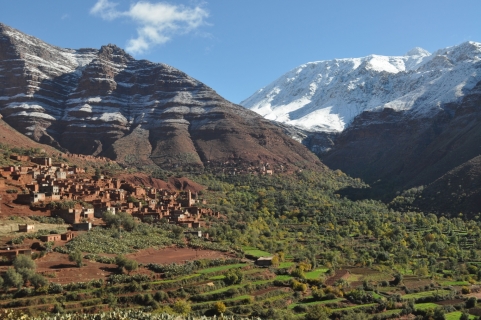Mohammedia Rainfall & Precipitation: Monthly Averages and Year-Round Insights
This page shows the average amount of rainfall per month in Mohammedia. The numbers are calculated over a 30-year period to provide a reliable average. Now, let’s break down all the details for a clearer picture.
Mohammedia tends toward drier weather patterns, receiving approximately 421 mm of rain per year.
Monthly Precipitation Levels
The average number of days each month with precipitation (> 0.2 mm)
November, the wettest month, has a maximum daytime temperature of 21°C. The city receives 191 hours of sunshine in this period. During the driest month July you can expect a temperature of 27°C. For more detailed insights into the city’s temperatures, visit our Mohammedia Temperature page.
Annual Precipitation in Morocco
The map below shows the annual precipitation across Morocco. You can also select the different months in case you are interested in a specific month.
 heavy rainfall
heavy rainfall
 high
high
 moderate
moderate
 low
low
 almost none
almost none
Amsterdam Precipitation Compared World Wide
Mohammedia’s average annual precipitation is 421 mm. Let’s compare this to some popular worldwide tourist destinations:In Lisbon, Portugal, the average annual precipitation is 774 mm, characterized by wet winters and dry summers typical of the Mediterranean climate.
Beijing, China, receives 560 mm of annual precipitation, concentrated in the summer months.
In Brisbane, Australia, the annual precipitation is 979 mm, making it wetter than Sydney.
Singapore, situated near the equator, gets 2581 mm of rainfall annually, with no distinct dry season and consistent monthly precipitation.
How is Precipitation Measured?
Precipitation amounts are measured using specific gauges installed at weather stations, collecting both rain and snow and any other type of precipitation. Rainfall is measured directly in millimeters, while that from snow and ice is obtained by melting it. Automated systems often incorporate heaters to make this easier.
Information from these stations is transmitted via Wi-Fi, satellite, GPS, or telephone connections to central monitoring networks. This information is immediately updated and integrated into weather models and forecasts.
Global Precipitation Patterns
Tropical Rainforests: In tropical regions, rainfall is generally abundant year-round. Areas near the equator, like the Amazon rainforest, can receive up to 3000 mm of rain annually.
Desert Regions: Deserts such as the Sahara and Arabian deserts typically see less than 250 mm of rainfall annually. Rainfall tends to be infrequent, but when it does occur, it is often intense.
Temperate Zones: In temperate regions, precipitation tends to be more evenly distributed, though areas closer to the ocean may see more rain in the winter months, and areas further inland experience drier summers.
Polar Regions: Precipitation in polar regions, like Antarctica, is extremely low, often falling as snow. Average annual precipitation in Antarctica is less than 200 mm, with some areas receiving as little as 50 mm annually.
For more detailed information about Mohammedia’s weather, including sunshine hours, humidity levels, and temperature data, visit our Mohammedia Climate page.
Current rainfall in Mohammedia
clear and no rain
clear and no rain
broken clouds and slight rain




